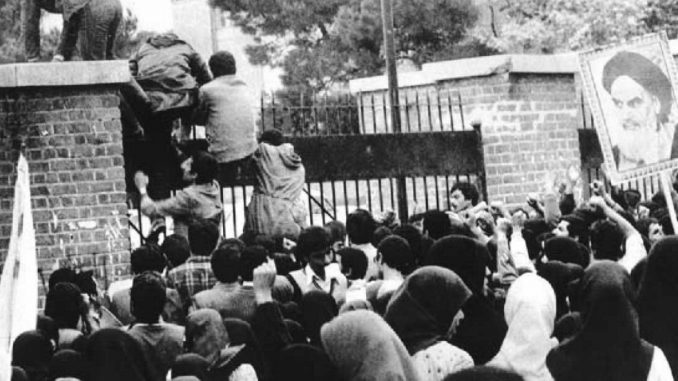
On this day, November 4th, in 1979, hundreds of Iranian students storm the U.S. Embassy in Tehran, taking more than 60 American hostages. leading to The Iranian Hostage Crisis. The students, supporters of the conservative Muslim cleric Ayatollah Khomeini, were demanding the return of Iran’s deposed leader, the Shah Mohammed Reza Pahlevi, who had fled to Egypt in January 1979 and by November was receiving cancer treatment in the United States. After the student takeover, President Jimmy Carter ordered a complete embargo of Iranian oil.
This embargo only exacerbated an energy crisis that had been going on since the beginning of 1979. An Iranian oil-field strike and the January revolution had disrupted oil supplies from that part of the Middle East, and the Organization of Petroleum Exporting Countries (OPEC) cartel had announced a per-barrel fee increase that sent prices inching toward an all-time high. By the time the students took over the Embassy in November, Americans were already dealing with the effects of this crisis: long lines and short tempers at gas pumps, panics over gasoline and heating oil shortages, and frustration with the inefficient, gas-guzzling vehicles manufactured by American automakers.
This “oil shock” reminded many Americans of the oil crisis of 1973-1974, when an Organization of Petroleum Exporting Countries (OPEC) embargo sent gasoline prices through the roof: By the time that embargo ended, the average retail price of gas had climbed to 84 cents per gallon from 38 cents per gallon. As a result, the big, heavy cars that American automakers were famous for became incredibly expensive to operate—many got fewer than 10 miles to every gallon of gas!—and many people traded their gas-guzzling muscle cars and gigantic luxury sedans for more fuel-efficient compact cars. This episode had not ended well for American carmakers, who had rushed some smaller cars to market without thoroughly checking them for problems and quirks, which in turn contributed to their growing reputation for unreliability and poor craftsmanship. Once the immediate crisis had subsided, most of those domestic compacts were left to languish on dealers’ lots.
1979’s hostage crisis compounded the energy crisis—and, in fact, many historians believe that the combination of the two events cost President Carter his job—but there were a few winners. Japanese carmakers, for instance, gained a reputation for building inexpensive, reliable, efficient cars that were particularly well-suited to the new era of austerity. Datsun, Subaru, Toyota and Honda—whose Accord sedan was one of the most successful cars of 1979—all used the energy crisis to gain a permanent foothold in the American marketplace.
In April 1980, President Carter severed all diplomatic relations with the Iranian government, but after a top-secret rescue mission failed, he resumed negotiations with the Khomeini regime. Despite his best efforts to win the hostages’ freedom while he was still in office, Carter did not get much credit for their release: The Iranians let the hostages go on January 20, 1981, just minutes after new elected president Ronald Reagan finished his inaugural address.


Be the first to comment